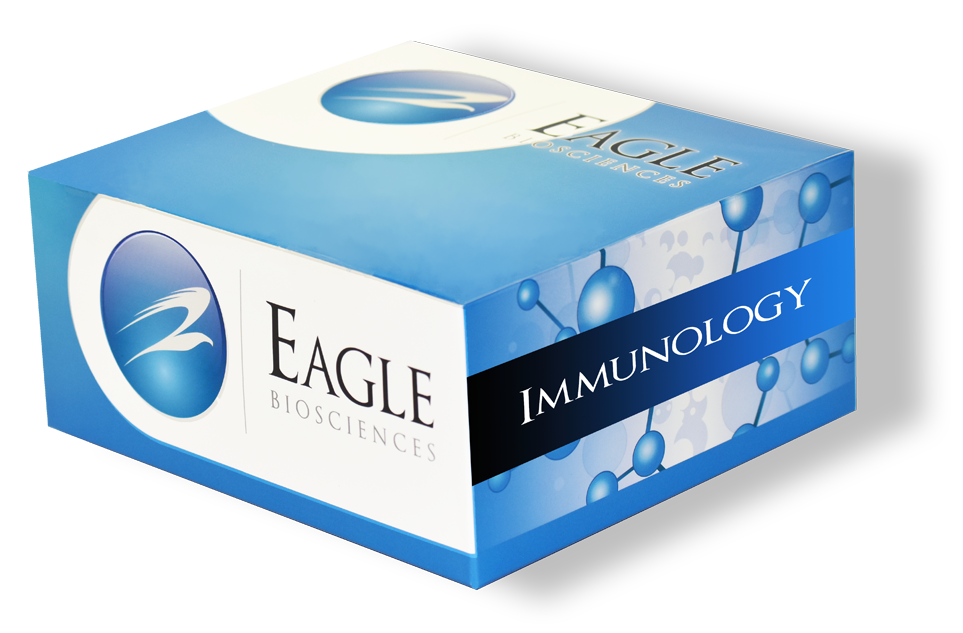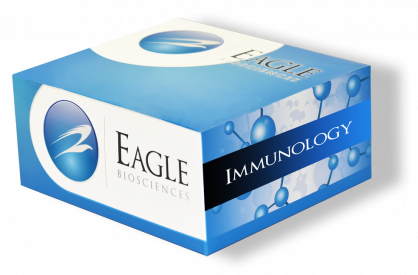Interferon Gamma ELISA Assay
The Interferon Gamma ELISA Assay is For Research Use Only
Size: 1×96 wells
Sensitivity: 7 pg/mL
Dynamic Range: 15.625-1000 pg/ml
Incubation Time: 3.5 hours
Sample Type: Serum, Plasma, Cell Culture
Sample Size: 100 µl
Alternative Names: IFN-gamma, IFN-γ
Assay Background
Interferon gamma (IFN-γ) is a multifunctional protein first observed as an antiviral activity in cultures of Sindbis virus-infected human leukocytes stimulated by PHA. Produced by Tlymphocytes and natural killer (NK) cells, IFN-γ is now known to be both an inhibitor of viral replication and a regulator of numerous immunological functions. Human IFN-γ is reported to be active only on human and non-human primate cells. The biochemistry and biological activities of the interferons have been extensively reviewed.
Human IFN-γ is a 143 amino acid residue, 20 or 25 kDa glycoprotein that demonstrates little sequence homology to IFN-α or –β. Naturally occurring IFN-γ is found as either of two molecular weight species, differing in degree of glycosylation. Human IFN-γ apparently exists as a head-to-tail dimer in solution with the C-terminus of one monomer aligned with the N-terminus of the other monomer.
A receptor for IFN-γ has been identified and its gene localized to chromosome 6 Apparently the product of a single gene, the receptor is a single chain 90 kDa glycoprotein that shows a high degree of species-specific binding of IFN-γ.
Functionally, IFN-γ produces a variety of effects. Produced by CD8+, NK, gd, and TH1 T helper cells, IFN-γ has documented antiviral, antiprotozoal and immunomodulatory effects on cell proliferation and apoptosis, as well as the stimulation and repression of a variety of genes he antiprotozoal activity of IFN-γ against Toxoplasma and Chlamydia is believed to result from indoleamine 2,3-dioxygenase activity, an enzyme induced by IFN-γ.The immunomodulatory effects of IFN-γ are extensive and diverse. In monocyte/macrophages, the activities of IFN-γ include: increasing the expression of class I and II MHC antigens; increasing the production of IL-1, platelet-activating factor, H2O2, and pterin; protection of monocytes against LAK cell-mediated lysis; downregulation of IL-8 mRNA expression that is upregulated by IL-2; and, with lipopolysaccharide, induction of NO production. Finally, IFN-γ has been shown to upregulate ICAM-1, but not E-Selectin or VCAM-1, expression on endothelial cells.
Related Products
Mouse Interferon Gamma (IFN-gamma) ELISA Assay Kit
High Sensitive IFN gamma ELISA Assay Kit


